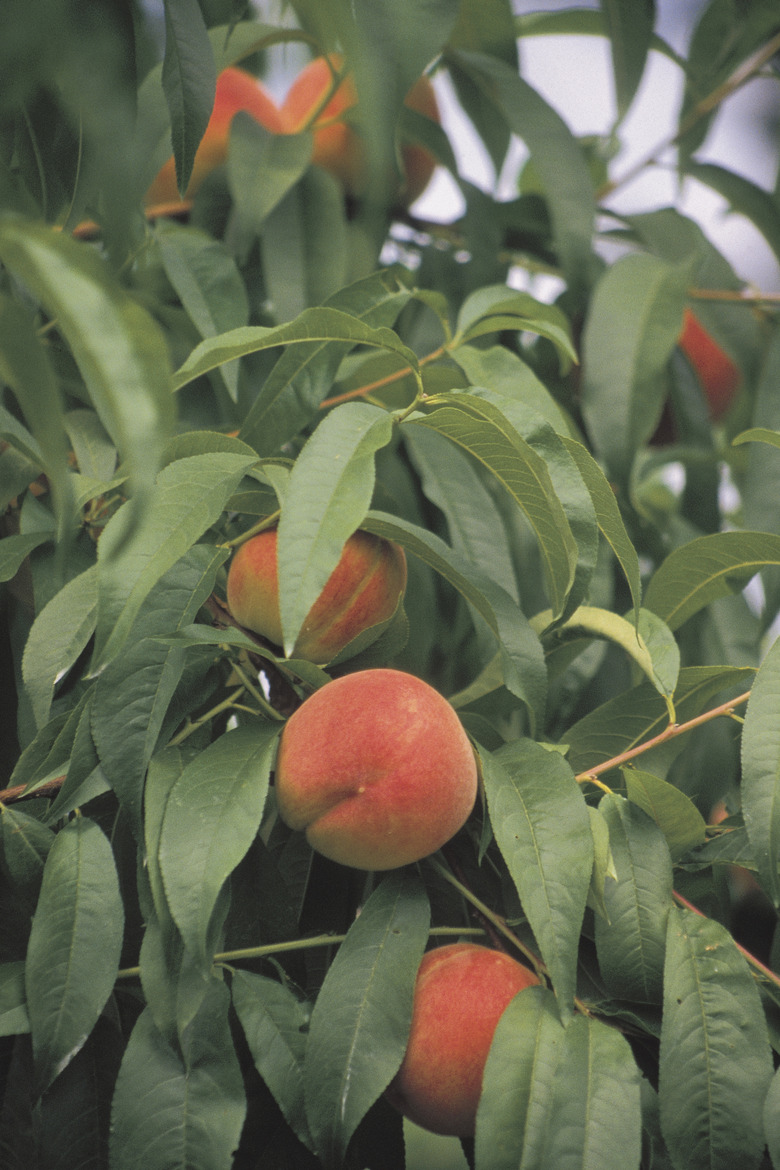Why Are My Peaches Small?
Nothing compares to biting into a large, juicy, ripe peach, especially one picked fresh from the tree in your backyard. However, without proper care, your peach trees may produce small fruit that are more stone than edible fruit. For the production grower, larger peaches mean larger profits, and following the tricks of the trade from production orchards will provide you with a tree full of large fruit.
Variety
Different varieties of peach trees produce different sizes of peaches. June Gold and Flordaking produce large peaches, whereas Red Haven peaches are medium-sized and Springcrest are small. Check the variety before purchasing. Also, peach trees do not hit real production until trees are about 4 years old. Allow the trees enough time to grow and mature before looking for a strong yield of large fruit.
Thinning
Peach trees generally produce a large amount of fruit, but crowded conditions create small peaches. Thin the fruit out within the first 40 days after bloom before the pit hardens. Leave about 6 to 8 inches between the remaining fruit. After the pit hardens, the fruit does not increase in size. Thinning is time-consuming and labor-intensive and must be done by hand. No chemical means of thinning are currently available, and many mechanical means have been ineffective.
Fertilizer
Proper fertilization improves peach tree growth and vigor, affects current fruit yield and influences the growth of fruitwood for next year's yield. Commercial growers use leaf analysis to determine what nutrients the tree has pulled from the soil, specifically the three primary nutrients of nitrogen, phosphorus and potassium. Too much fertilizer encourages an abundance of foliage growth but poor-quality fruit growth. Ideal ranges of leaf nutrient levels are 2.75 to 3.5 percent nitrogen, 0.12 to 0.50 percent phosphorus and 1.5 to 2.5 percent potassium. Check your local cooperative extension for the availability of leaf analysis tests.
Water and Sunlight
Irrigation and direct sunlight also play important roles in fruit size. An individual peach tree may consume 36 to 45 gallons of water a day. According to Kathryn C. Taylor of the University of Georgia, supplemental irrigation before pit hardening add to fruit size potential, and irrigating on the days just before harvest will increase fruit size by ¼ to ½ inch. Additionally, a poorly pruned peach tree prevents enough direct sunlight from reaching the peaches, inhibiting fruit size. Pruning allows sunlight to penetrate the interior and improves air circulation.
